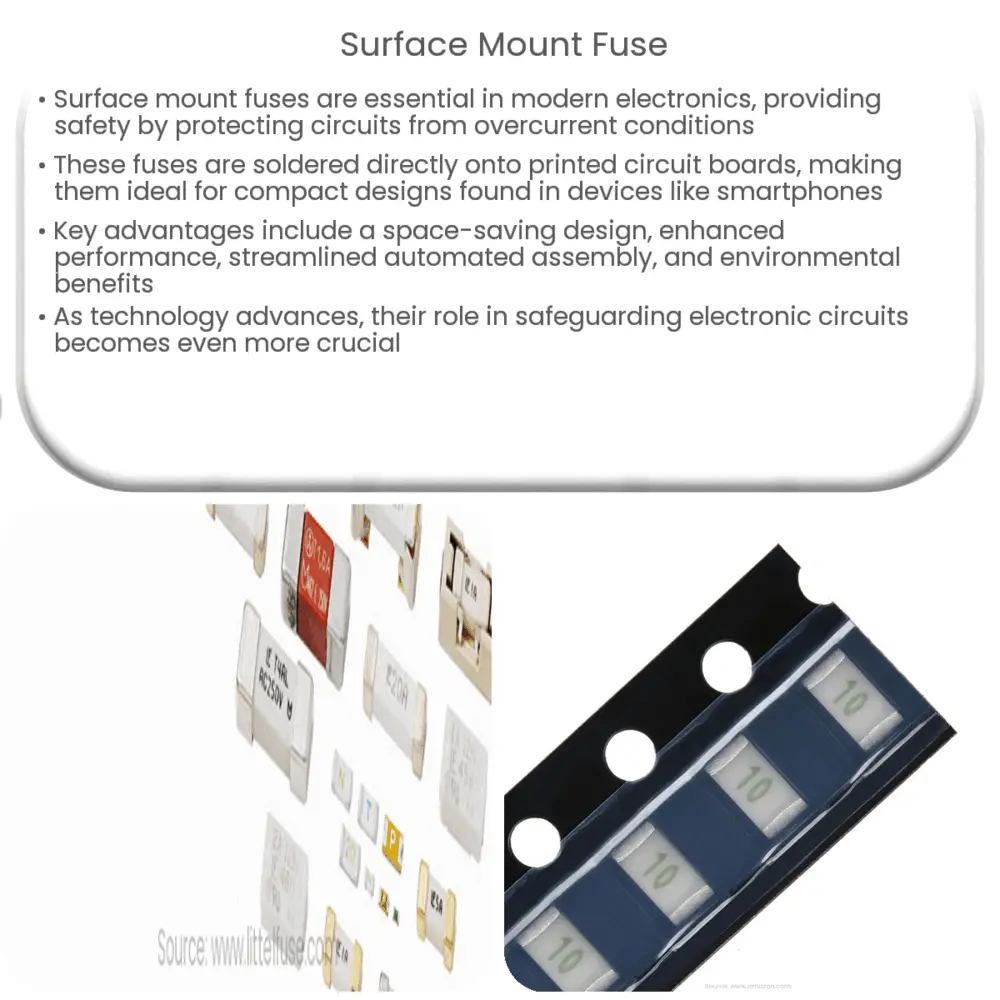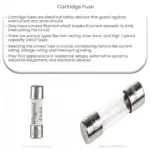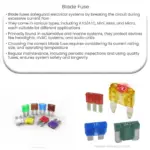Surface mount fuses are compact, low-profile safety devices that protect electronic circuits from overcurrent, offering space-saving and improved performance.

Surface Mount Fuse: An Introduction to its Function and Benefits
Surface mount fuses, which are widely used in today’s electronic devices, offer numerous benefits due to their compact design and performance capabilities. In this article, we will discuss the purpose of surface mount fuses, their advantages, and how they have become an essential component in modern electronics.
What are Surface Mount Fuses?
Surface mount fuses are small, low-profile, electrical safety devices designed to protect electronic circuits from overcurrent conditions. They are typically made of a thin conductive strip or wire that melts when a current above a specified limit flows through it. This breaks the electrical connection and prevents damage to the circuit and its components.
Unlike traditional through-hole fuses, surface mount fuses are soldered directly onto the surface of a printed circuit board (PCB), eliminating the need for holes in the board. This streamlined design makes them ideal for use in compact and densely populated circuit boards, which are commonly found in modern electronic devices like smartphones, computers, and various consumer electronics.
Advantages of Surface Mount Fuses
There are several key advantages to using surface mount fuses in electronic applications, which include:
- Space-saving design: Due to their compact size and surface mount configuration, these fuses require less space on a PCB compared to traditional through-hole fuses. This allows for more efficient use of board real estate and enables the development of smaller, lighter, and more powerful electronic devices.
- Improved performance: Surface mount fuses typically have lower internal resistance and faster response times than their through-hole counterparts. This allows them to provide more accurate and reliable protection for sensitive electronic components.
- Automated assembly: Surface mount fuses can be easily placed and soldered onto PCBs using automated assembly equipment, which reduces labor costs and increases production efficiency.
- Environmental considerations: Surface mount fuses are generally more environmentally friendly than through-hole fuses, as they require fewer materials to manufacture and produce less waste during production and disposal.
Conclusion
Surface mount fuses are an essential component in modern electronic devices, offering numerous advantages in terms of space-saving design, improved performance, and automation. As technology continues to evolve and the demand for smaller, more powerful devices grows, the role of surface mount fuses in protecting electronic circuits will only become more critical. In the second part of this article, we will explore the various types of surface mount fuses, their applications, and how to select the appropriate fuse for your specific needs.
Types of Surface Mount Fuses
There are several types of surface mount fuses available, each designed for specific applications and requirements. Some of the most common types include:
- Fast-acting fuses: These fuses are designed to open quickly when subjected to an overcurrent condition, providing rapid protection for sensitive electronic components. They are commonly used in power supplies, telecommunications equipment, and other applications where a quick response is crucial.
- Time-delay fuses: Also known as slow-blow fuses, these fuses are designed to withstand short-duration overcurrent conditions without opening. They are commonly used in applications with inductive loads, such as motors and transformers, where temporary current surges are expected.
- Temperature-sensitive fuses: These fuses, also known as thermal fuses, are designed to open when exposed to excessive temperatures. They are commonly used in applications where overtemperature conditions pose a risk to the device or its components, such as battery packs and power tools.
Selecting the Right Surface Mount Fuse
To choose the appropriate surface mount fuse for your specific application, consider the following factors:
- Current rating: Select a fuse with a current rating that matches or slightly exceeds the normal operating current of your circuit. This ensures the fuse will not open during normal operation, but will provide protection in case of an overcurrent event.
- Voltage rating: Choose a fuse with a voltage rating that is equal to or greater than the maximum voltage of your circuit. This ensures the fuse can safely handle the voltage in case of a fault condition.
- Interrupting capacity: The interrupting capacity, also known as breaking capacity, refers to the maximum current a fuse can safely interrupt without causing damage to itself or the circuit. Ensure the fuse’s interrupting capacity is sufficient for your specific application.
- Operating temperature: Consider the temperature range in which your device will operate, and choose a fuse with a suitable operating temperature range to ensure reliable performance under all expected conditions.
- Response time: Depending on your application, you may require a fast-acting or time-delay fuse. Select the appropriate type based on the specific needs of your circuit and its components.
Conclusion
Surface mount fuses play a vital role in protecting electronic circuits and devices from damage caused by overcurrent and overtemperature conditions. By understanding the various types of surface mount fuses available and considering factors such as current rating, voltage rating, interrupting capacity, and response time, you can select the appropriate fuse for your specific application. This ensures the safety and reliability of your electronic devices, contributing to their longevity and optimal performance.




